

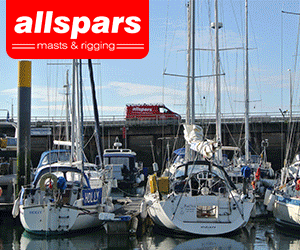



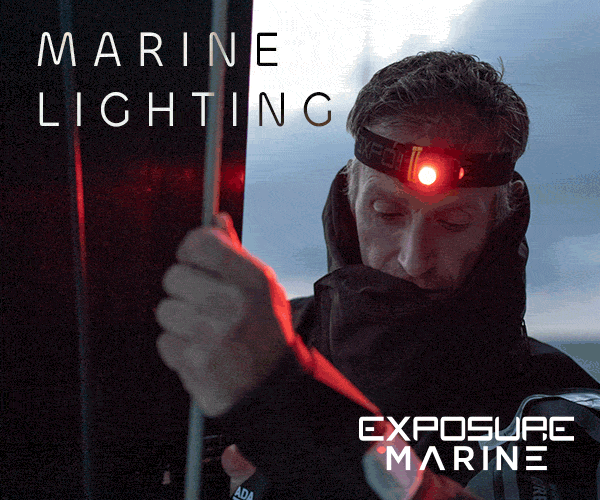

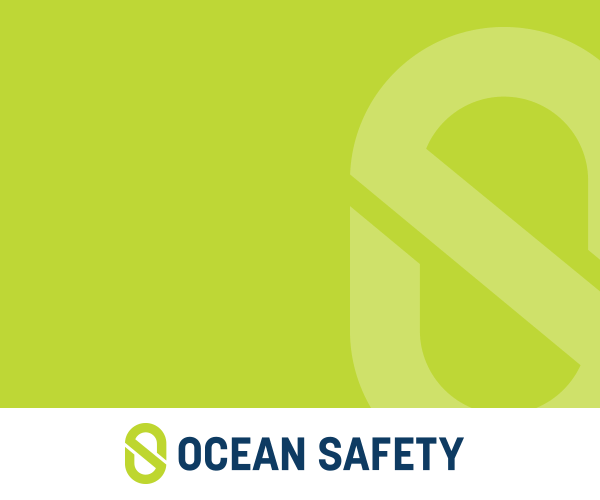



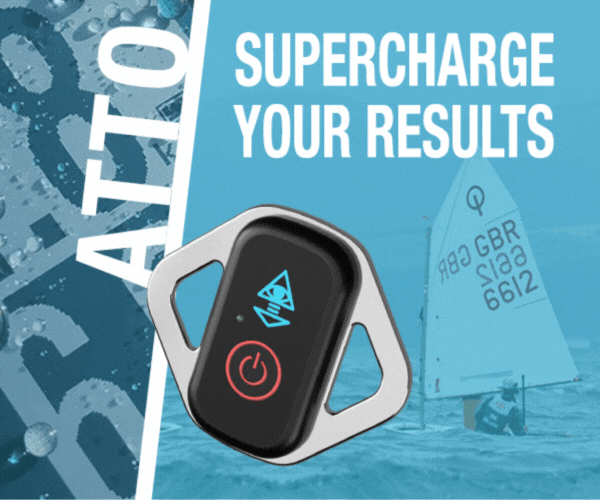
Boats for sale
| Rossiter Pintail Mortagne sur Gironde, near Bordeaux |
 |
| Laser 28 - Excellent example of this great design Hamble le rice |
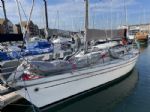 |
List classes of boat for sale |
Inside and outside at an obstruction. |
Post Reply 
|
Page 123> |
| Author | |||
gordon 
Really should get out more 
Joined: 07 Sep 04 Online Status: Offline Posts: 1037 |
 Post Options Post Options
 Quote Quote  Reply Reply
 Topic: Inside and outside at an obstruction. Topic: Inside and outside at an obstruction.Posted: 16 Jan 14 at 9:04am |
||
|
A hail from W would clearly establish the point at which she is claiming that she is at the obstruction -
from that point on the obligation of Y is to give room - and protest if she believes that W could have gone in closer and kept clear as is made clear by the RYA case.
If after being informed by W that she is at the obstruction, being constrained by her draft, L continues to luff she is putting herself at risk of an allegation of "unfair sailing", a breach of rule 2. I repeat - L's knowledge of W's draft is not entirely irrelevant. |
|||
|
Gordon
|
|||
 |
|||
Brass 
Really should get out more 
Joined: 24 Mar 08 Location: Australia Online Status: Offline Posts: 1151 |
 Post Options Post Options
 Quote Quote  Reply Reply
 Posted: 16 Jan 14 at 12:53am Posted: 16 Jan 14 at 12:53am |
||
@2 B is clearly enough inside Y: the question is whether she is 'at' the obstruction, tested, in accordance with RYA Appeal 2011/1, by B's reasonable belief that she could not sail any closer to the obstruction. Given that she sails another two boat lengths towards the obstruction, there isn't evidence of her reasonable belief that she was at the obstruction @2. OTOH, if she had hit the mud @2, that would be evidence that Y had not given her the room to which she was entitled at that point. @3, as I previously discussed, Y is something like exactly 90 degrees to the shoreline, but it's going to be extremely difficulty to be certain that she is sailing exactly 90 degrees to the shore: we can't be certain, so the last point of certainty is the point just before @3, when she is overlapped outside B. @4, Y is clearly, now, inside B so no longer can be required to give B room under rule 19.2. Last Point of Certainty is a very common and useful concept. Rule 18.2( d ) is a particular example. Here's a description of how Last Point of Certainty works from the MR Call Book
Edited by Brass - 16 Jan 14 at 1:58am |
|||
 |
|||
SteveB00 
Newbie 
Joined: 30 Nov 13 Location: Sydney, Oz Online Status: Offline Posts: 24 |
 Post Options Post Options
 Quote Quote  Reply Reply
 Posted: 16 Jan 14 at 12:03am Posted: 16 Jan 14 at 12:03am |
||
Isn't this only the case if B is overlapped "inside" Y? At positions 3 and 4 in the diagram, this isn't the case, at least not by any dictionary definition of "inside" (and there is no definition in RRS). If B runs out of of water, be it on her own head at this point. Steve = : ^ )
|
|||
 |
|||
JimC 
Really should get out more 

Joined: 17 May 04 Location: United Kingdom Online Status: Offline Posts: 6661 |
 Post Options Post Options
 Quote Quote  Reply Reply
 Posted: 15 Jan 14 at 11:55pm Posted: 15 Jan 14 at 11:55pm |
||
Sailing, as I do, a boat that readily exceeds one boat length per second, two boat lengths doesn't sound very comfortable to me. That RYA case seems smack on. I really must get in the habit of reading the RYA one (which has all the ISAF cases in anyway) rather than the ISAF one. And I guess then the answer is that Y breaks 19.2b as soon as there is a reasonable belief that B is running out of water. |
|||
 |
|||
Brass 
Really should get out more 
Joined: 24 Mar 08 Location: Australia Online Status: Offline Posts: 1151 |
 Post Options Post Options
 Quote Quote  Reply Reply
 Posted: 15 Jan 14 at 11:25pm Posted: 15 Jan 14 at 11:25pm |
||
I don't agree that your argument establishes that L's knowledge of W's draft, or the relationship between W's draft and the depth of water is relevant to breach of rule 19.2. The vast majority of rules, and certainly Part 2 rules, rely only on physical facts: for example was there room or was there not. There is no mental element of either knowledge or intention. Whether there was an 'exceptional' danger is likewise not relevant. No rule says a boat shall sail in a seamanlike way. No rule says that a boat loses an entitlement she has if she does not sail in a seamanlike way, although, clearly, in some circumstances, manouevering in an unseamanlike way will make it impossible for a boat to prove that there was insufficient room if she had manoeuvered in a seamanlike way. Cases 21 (last paragraph) and 103 (headnote) tell us that 'seamanlike way' refers to the 'handling of [a boat's] helm, sheets and sails' and 'boat handling'. While W hailing to alert L of the need to give her room might be the seamanlike thing to do, hailing is of a wholly different species of action to 'manoeuvering in a seamanlike way' as the term is used in the rules. I think RYA Appeal 2011/1 is relevant. It describes a case where the outside boat did not think she needed to give room, and where no hails were given.
|
|||
 |
|||
Brass 
Really should get out more 
Joined: 24 Mar 08 Location: Australia Online Status: Offline Posts: 1151 |
 Post Options Post Options
 Quote Quote  Reply Reply
 Posted: 15 Jan 14 at 9:49pm Posted: 15 Jan 14 at 9:49pm |
||
That depends on the facts. Rule 19 only applies 'at' the obstruction. I think boats are 'at' the obstruction when W, the larger, becomes reasonably concerned about water under her keel. As I said, if W can demonstrate that there was not enough room for her to pass between L and the obstruction (for example, if she grounds, while taking no more space than necessary to keep clear of L) L has broken rule 19.2( b ). Given that in the diagram both boats sailed on for another two or more boat lengths after position 2 without incident, I don't think they were 'at' the obstruction at position 2. To give room at the obstruction, it is not necessary for L to 'steer for the mark', as long as she gives room. 'Steer for the mark' smacks of 'proper course' which is not relevant here. Edited by Brass - 15 Jan 14 at 9:50pm |
|||
 |
|||
gordon 
Really should get out more 
Joined: 07 Sep 04 Online Status: Offline Posts: 1037 |
 Post Options Post Options
 Quote Quote  Reply Reply
 Posted: 15 Jan 14 at 5:58pm Posted: 15 Jan 14 at 5:58pm |
||
|
Brass said - "If W can demonstrate that there was not
enough room for her to pass between L and the obstruction (for example,
if she grounds, while taking no more space than necessary to keep clear
of L) L has broken rule 19.2( b ). Whether L knew or ought to have
known that W's deeper draft effectively brought the obstruction
'closer' is irrelevant."
The point about whether L knew about W's deeper draft or not is not totally irrelevant... because in this instance the draft defines the limits of the obstruction. Furtermore, the obstruction is now underwater, therefore invisible. If W's draft is exceptional compared to other similar boats L an argue that she gave the space needed but that W by not informing her of an exceptional danger was not acting in a seamanlike way. Just as it is seamanlike to keep a good lookout, in this situation it would be samalike for W to inform L that she needs a greater depth of water in which to sail. |
|||
|
Gordon
|
|||
 |
|||
RS400atC 
Really should get out more 
Joined: 04 Dec 08 Online Status: Offline Posts: 3011 |
 Post Options Post Options
 Quote Quote  Reply Reply
 Posted: 15 Jan 14 at 1:42pm Posted: 15 Jan 14 at 1:42pm |
||
At position 2 in the yellow/blue diagram, is Y breaking this rule? At what point is she required to steer for the mark, allowing space for blue? |
|||
 |
|||
Brass 
Really should get out more 
Joined: 24 Mar 08 Location: Australia Online Status: Offline Posts: 1151 |
 Post Options Post Options
 Quote Quote  Reply Reply
 Posted: 14 Jan 14 at 10:39pm Posted: 14 Jan 14 at 10:39pm |
||
W can call for water, or call for a pint, or call for a whisky and soda, but it won't affect her rights and obligations under the rules. Rule 19.2( b ) says the outside boat (L) shall give the inside boat (W) room between her and the obstruction, unless she has been unable to do so from the time the overlap began. This simply depends on facts. If W can demonstrate that there was not enough room for her to pass between L and the obstruction (for example, if she grounds, while taking no more space than necessary to keep clear of L) L has broken rule 19.2( b ). Whether L knew or ought to have known that W's deeper draft effectively brought the obstruction 'closer' is irrelevant. Yes it would be nice and it would be sensible if W hailed L that she needed the room, but it is not a requirement of the rules. Note, we are not talking about rule 20 hails here, because that would be a hail for room to tack and avoid, when what W would be hailing for would be for room to stand on or bear away.
|
|||
 |
|||
RS400atC 
Really should get out more 
Joined: 04 Dec 08 Online Status: Offline Posts: 3011 |
 Post Options Post Options
 Quote Quote  Reply Reply
 Posted: 13 Jan 14 at 12:27pm Posted: 13 Jan 14 at 12:27pm |
||
|
Practically, it seems to me, this is really the end game of a w/l situation, not a stand alone obstruction thing.
Neither boat will know the exact topography of the contour line which dictates how far W can be luffed. There may be shallow bits not parallel to the shore. If W can reasonably believe he is closer to that contour than L, he can call for water? In 40ft boats, he must make his call in sufficient time for L to respond. Once he has called, L is bound by it and would have to prove that W called when he knew he had a good many boatlengths before risking his keel. So I guess for L to come out of this well, he needs to take W beyond 90 degrees to the shoreline several boatlengths from that contour. |
|||
 |
|||
Post Reply 
|
Page 123> |
| Forum Jump | Forum Permissions  You cannot post new topics in this forum You cannot reply to topics in this forum You cannot delete your posts in this forum You cannot edit your posts in this forum You cannot create polls in this forum You cannot vote in polls in this forum |
Bulletin Board Software by Web Wiz Forums® version 9.665y
Copyright ©2001-2010 Web Wiz
Change your personal settings, or read our privacy policy
Copyright ©2001-2010 Web Wiz
Change your personal settings, or read our privacy policy












 Printable Version
Printable Version Delicious
Delicious Digg
Digg Facebook
Facebook Furl
Furl Google
Google MySpace
MySpace Newsvine
Newsvine reddit
reddit StumbleUpon
StumbleUpon Twitter
Twitter Windows Live
Windows Live Yahoo Bookmarks
Yahoo Bookmarks Topic Options
Topic Options